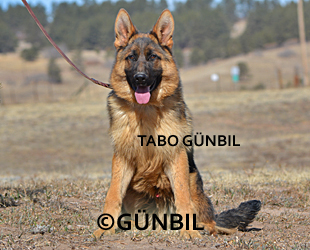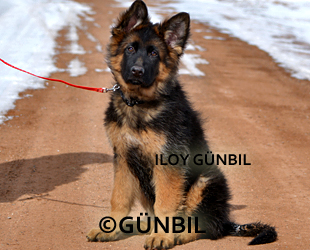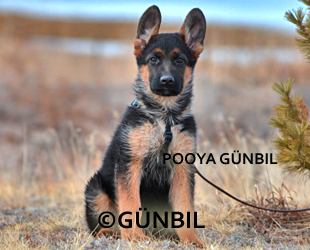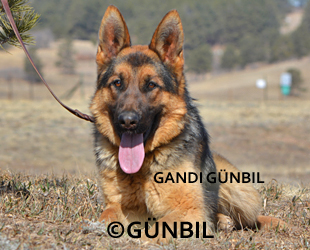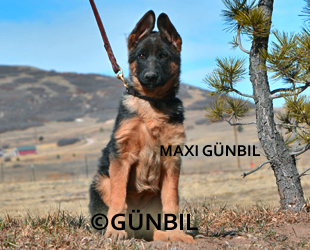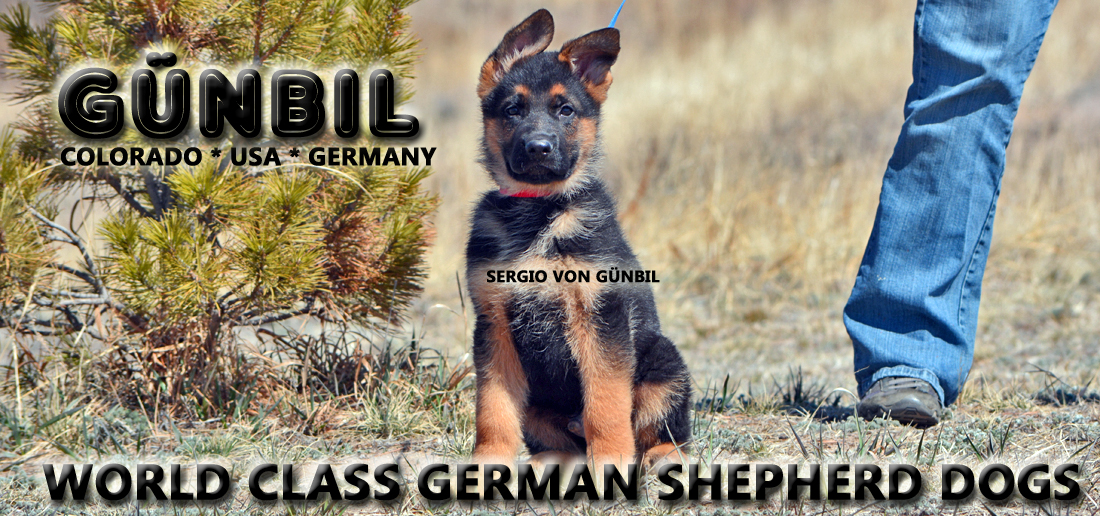
Dog Behavior Drive
Hunting : This behavior requires the dog to use all of its senses, determination and a combination of drives to find prey. Think of it as an addict on a quest to find drugs. The dog will let nothing stand in its way. It will search tirelessly for as long as it takes to reach its goal. Once the dog locates any indication that his goal is near, a waft of scent, a rustle of sound just within hearing or a flicker of motion it will go into acquisition mode or prey drive. This is the most important quality of a patrol dog since finding bad guys is what being a patrol dog is all about.
Air Scent : This is merely the impulse to hunt by lifting the nose and sniffing airborne currents for scent as opposed to sniffing the ground. This behavior is extremely important for hunting and is primarily used by a patrol dog in building and area searches as well as when trailing.
Tracking : This is the impulse to hunt by putting the nose down to the ground and following the smell of the ground disturbance and the animal scent associated with the passage of prey.
Prey : This is the desire to chase, grasp and subdue prey. This is one of the most over used and misunderstood terms in dog training. It is often interchanged with the term play drive. Nothing could be further from the truth. In its purist form the object of prey drive is a kill. In prey drive a dog becomes target-locked (fixated) on a moving object. Its body will become fluid and reactive with its total and complete attention on the prey item. The dog will lower its center of gravity and bring its tail into the plane of its spine for better balance. Its ears will turn towards the prey object like radar and its eyes will be wide open and in a receiving mode. Prey drive is a silent drive. Barking dogs don’t sneak up on things very well, however, it is not uncommon for a very frustrated dog to vocalize if restrained too long or too often in training. Once the dog gets to the prey it grasps it any way it can and as soon as it feels the advantage it will try to get a better purchase on the prey by adjusting the grip inward. When the prey goes down there is often one more grip adjustment and then the dog often shakes the prey. This drive is a critical drive for a patrol dog because it can motivate many of the dog’s criminal apprehension skills.
Retrieve : This is the desire to bring prey back to the pack leader. This is often exhibited in the dog that will bring the stick or ball back to the handler over and over and often just drop it at the handler’s feet. This dog gets its satisfaction from the delivery of the prey. The dog that brings it back and doesn’t want to give it up is not showing this drive or is conflicted in some way. Retrieve drive can be very useful in motivating training, especially detection work.
Rank : This is the desire in the dog to raise his stature within the pack. A dog that has a high rank drive will try to work his way into the alpha position. The term alpha is a relative term. In any group of dogs one of them will be the alpha. That is the dog within that group with the highest rank drive combined with the most physical prowess. You could take that dog and put him in a group with dog’s that have yet even higher rank drive and he would not be alpha. Dogs with high rank drive are prone to trying to dominate every dog they come in contact with. They will have a tendency to fight for this dominance. A rank dog will also challenge the authority of the handler. This will most likely occur during corrections or when the dog feels it is being forced to do something against its will, especially the down command. The behavior will manifest itself as growling, snapping and even biting the handler when the handler presses these issues. The strange thing is that a dog can have fairly high levels of both a rank and subordinate drive. These dogs are driven to lead but willing to follow if a stronger leader is available.
Subordinate : This is the desire to accept the authority and will of the pack leader. This dog willingly obeys and is most comfortable when someone else is in charge. A dog with a high drive to subordinate could become an omega dog. The higher this drive the more submissive the dog will act. Extremely high levels could lead to submissive urination. This dog may seem to have been abused.
Pack : This is the desire to have social contact with the pack members. It is the mental aspect of the social drives. The dog seeks the company of others. This dog wants to hang out with anybody, other dogs, other people, and especially its handler. In higher levels this dog would follow you everywhere, be underfoot constantly, even waiting outside the bathroom door.
Play : This is the desire to have physical contact with the handler, family, or even other dogs. This behavior is mostly seen is younger dogs but can follow a dog through life. If a dog is properly socialized as a pup it will retain this quality well into adulthood. . You can usually tell when two dogs are about to play by a specific signal that they use. It’s called Beckhov’s bow. Once a dog bows and the other accepts, the rank order is put aside and this allows for aggressive play that is understood by both parties to be just play. This drive can be used for motivating many forms of training.
Activity : This is the impulse to be constantly active. Not hyperactive, just on the go all the time. Although the drive is mental the manifestation of it is physical. Activity drive puts energy into all other drives. A dog with a high activity level will usually be trying to entertain itself. This can become problematic if the dog doesn’t have a constructive outlet for all that energy.
Fight : This is the drive to test the dog’s own strength and physical prowess against an opponent. There is no fear and there is no anger involved. It’s like two guys that want put on boxing gloves and go toe to toe, loser buys the beer. It is done for the love of combat. This drive influences many others.
Guard : This is used to defend territory or prey by barking and growling. If these warning signals do not deter then a defensive bite may occur. This behavior is only exhibited under specific conditions and is territorial in nature. Other drives contribute to its intensity.
Protection : This is the drive to defend the pack leader and other members of the pack. This drive is seen when either a real or imagined threat is perceived. A subtle sign of it is when a dog moves between its handler and a stranger and then remains alert. An extreme example would be a dog engaging a threatening individual without ever having had any protection training. This drive is much more rare than people think.
Survival : This drive is motivated by fear brought on by a real or imagined threat. It is exhibited as “fight or flight” behavior also known as “defense or avoidance.” If the dog goes into defense it will attempt to negate the threat by a brief intense attack and then retreat before an injury is sustained. In the avoidance mode it will simply try to escape. The dog will exhibit body language that is intended to increase its size and therefore its ability to threaten such as turning sideways and raising its hair. It will also make loud aggressive barks and growls all in an attempt to convince an opponent to leave it alone. If a dog is on a leash and begins to go into fight or flight, it will invariably go into the defense or fight mode because the leash has canceled its avoidance or flight option.
Dog Behavior Drive
Trainability : Trainability is a psychological character trait. It is generally seen in one or both of two ways. The first is the spontaneous attempt to perform the will of the pack leader or handler. The second is the number of behaviors that can be learned. Trainability can be described as a willingness to comply and an eagerness to learn new tasks.
Hardness : This trait is both psychological and physiological. It is a physical and/or mental resiliency to unpleasant experiences. Hardness is easily understood when compared with a pain threshold. A dog with a high degree of hardness can receive a tremendous amount of pain and stress with little lasting negative effect. It also means the dog will need stronger corrections when disobedient. Physiologically, hardness is in direct relation to the thickness of the sheathing around the nerve fibers in the dog’s body; the thicker the nerve sheathing, the harder the dog. High arousal levels in a hard dog will increase its hardness to the point that corrections become almost totally ineffective.
Softness : Softness is the opposite of hardness and is the natural state of the wild dog. Nature has dictated softness as a survival trait. The soft dog perceives pain and stress more intensely than the average dog. A dog with a high level of softness often associates the location of a painful or stressful experience with the experience itself. It may never go back to an area where it received a traumatic experience. For example, if a soft dog stepped on a bee and got stung it may walk around that spot on the lawn for hours if not days before the effect wears off.
Courage : Simply put, courage is the absence of fear toward real or imagined danger. This trait is psychological and wholly based in genetics. A dog is either born with courage or without. Courage has been bred into some dogs or more to the point, fear has been bred out. Since the natural state of the dog is soft and fearful, the hard courageous dog that we breed for goes against the natural order of things and would not survive long in the wild.
Confidence : Confidence is a psychological trait that is environmentally influenced. It is in essence, brainwashing. Confidence is convincing the dog through training that he is more courageous than he was born to be. We build confidence like we build muscle. Take the dog to a moderate level of stress in training and then let him win. This lets him learn that fighting through the stress will be rewarded by the stress being removed. Over time the dog will believe in himself more and more. The important point to remember is that there is a crisis point where it all falls apart. If the dog reaches a level of stress that is beyond what he has been trained to accept, it will revert to its true character.
Fear : Fear is psychological and genetically based. It is the perception of real or imagined danger. Fear is the natural protective measure to prevent the extermination of the dog or the species. A high level of fear is the natural state of the dog.
Moodiness : Moodiness is also psychological but genetically based. It is the propensity for inconsistent behavior. The dog will perform excellent work one day and the next do terribly, for no apparent reason. It is not easy to recognize unless it is an extreme case.
Sharpness : Sharpness is a trait that is psychological but genetically based. It is the tendency to react to stressful situations with aggressive behavior. An example would be a dog that when startled bites without warning. This same dog would then realize its mistake and return to its normal self. Sharpness is based in fear.
Viciousness : Viciousness is a trait that is psychological but genetically based. It is the propensity for unwarranted vicious aggression. The aggression is observed most frequently as wide-eyed, wild and frightening behavior. An example would be a dog that notices and then without warning attacks another dog, person or object. It is seldom seen but when it is exhibited it is unmistakable.
Temperament : Temperament is a trait that is psychological but genetically based. It can be influenced significantly by the environment. Temperament is described by adjectives such as full, moderate or poor. A full temperament means the dog has a zesty attitude and is full of life. A poor temperament describes a dog that is sluggish and lethargic.
Feral Tendency : Feral tendency is a trait that is totally genetic. It is the tendency to revert to a wild animal. A dog with a high degree of feral tendency may seem to act quite intelligently. It may learn quickly and seem to be high in trainability. Trainability prompts the dog to remain obedient when pain or stress reaches a critical point whereas feral tendency prompts the dog to disobey at this point. When stress is high, the highly feral dog begins to outmaneuver the handler or to escape the pain or stress. An example is a dog that throws itself against its collar attempting to pull out of it to avoid a stressful situation. It may seem to anticipate corrections and the handler will have difficulty enforcing proper obedience in that phase of training. The dog acts as if it knows it will be corrected and displays behavior that looks like avoidance of the handler.
Sensory Threshold : Sensory threshold is a trait that is totally genetic. This describes the amount of stimulus that is necessary to elicit a response from a dog. A dog with a low sensory threshold will take very little to stimulate it. It will be more likely to whine and even scream during agitation. It will have a tendency to over stimulate and this can bring out any feral tendency that may be present. A dog with a high sensory threshold will seem somewhat dull and take longer to “warm up.”
Dogfight Tendency : This trait is primarily genetic but can be environmentally exacerbated. It can be confused with rank drive or fight drive. Both of these drives can prompt the dog to engage in combat regardless of the opponent, man or animal. Dogfight tendency focuses on dogs only. It is completely possible to have a dog that is totally safe with its handler or strangers, even infants, but will attack another dog as if obsessed. Normally a male will not attack a female or a puppy; however, Dogfight tendency is exhibited regardless of the sex or age of the other dog. Dogfight tendency differs from rank and fight drive in another way. In rank and fight drive encounters the victorious dog will eventually allow the loser to escape. In an encounter that has a victor motivated by dogfight tendency it will end in the death of the loser.
Distractibility : Distractibility is genetically based but environmentally influenced. It describes the tendency to be easily diverted from a task. This becomes a real issue when the dog enters the proofing phase of training where high distraction is introduced. A dog with a high level of distractibility requires an abnormal amount of training to maintain competency.
Agility : Agility is a trait that describes the natural speed, surefootedness and coordination of the dog. An example of agility is the dog that pursues at breakneck speed and can turn on a dime if the suspect tries to sidestep its pursuit.
Physical Endurance : This physical trait describes the tone and general muscle condition of the dog. A dog with good physical endurance expends less energy as it works, thereby enabling a greater quantity of work in a given time. Physical conditioning or exercise will increase physical endurance.
Credits: Patrick O’Connor
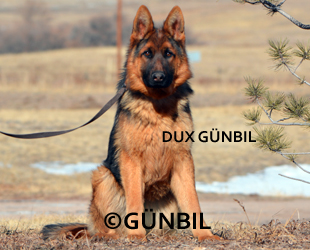
- All About German Shepherd Puppies
- Pet Disease and Allergies
- Hips and Elbows
- German Shepherd Dog Anatomy
- What is Schutzhund
- German Shepherd Behavior
- Quick Tips On German Shepherds
- Our Show Dogs
